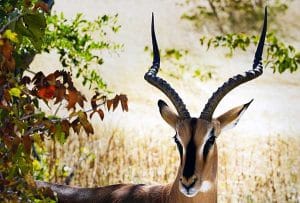Luxury Tours
Namibia is a great place to start your trip to Africa. It’s one of the safest, most pleasant destinations on the continent, with stunning vistas and a welcoming community. Namibia envelops visitors new to Africa in its nature-filled wilderness, big and spectacular landscapes, and peaceful, inviting populace. So what are you waiting for? Plan your luxury Namibia travel itineraries today!
That isn’t to imply that it isn’t worth visiting several times; the country’s enormous red dunes, fascinating Skeleton Coast, spectacular wildlife viewing, endless starry nights, and seriously delicious cuisine would have you yearning to return. What a wonderful place to begin your trip if this is your first time. Contact us to learn more about Burchell-Wolf Safaris

According to legend, Namibia occupies the eastern portion of the country and is named for a person who died there. The world’s oldest desert, Namib, covers much of the northeast section of the country and features ancient marine bones and the powerful yet stunning dead tree valleys of Sossusvlei. The amazing Fish River Canyon continues.
This nation’s stunning natural beauty and remote wilderness only add to the spectacular daily experiences you’ll have: the wildlife.
Namibia is one of Africa’s best areas to view wildlife, as it offers some of the continent’s greatest game-viewing experiences. Whether you’re in Etosha National Park’s watering holes, seeing desert-adapted elephants or free-ranging rhinos in Damaraland, or exploring one of Namibia’s many private game reserves.
Namibia’s human history is also rather beautiful and significant. The complicated history of Namibia’s colonization and oppression will be taught to you at museums, architectural marvels, and ghost towns abandoned by people. Continue digging, and you’ll discover that the rocks are a narrative from before European interference. Now a UNESCO World Heritage Site since 1994, Twy
Namibia’s otherworldly allure is tenfold between the magnificent roads to drive, some of the greatest stargazing you’ll ever see, and everything else mentioned above. So continue reading to discover what a Namibia trip has in store for you.
Namibia is a year-round getaway; however, there are advantages to certain seasons, much like with any other year-round destination.
Namibia’s winter lasts from June to August, which is also the arid season. If animal viewing is on your itinerary, the winter months are the best time to go since these are when dry areas are at their most active, resulting in watering holes full of life. You may spend days driving around Etosha during the rainy season.
The flip side of winter is that it is also the most crowded and costly time to visit Namibia. According to European summer holidays, July and August are high seasons, with crowded tourist attractions and lodges often filling up far in advance.
For the best of both worlds, visiting Namibia during its rainy summer months (from March to May or September to October) lets you enjoy the nation with fewer people.
The sand dunes of the Namib give way to the stone and gravel of remote Kaokaveld. Hoanib Skeleton Coast Camp, nestled in a valley formed by the once furious but now barely existent Hoanib River, lies just west of Windhoek.
On the banks of a dry riverbed, traditional thatched roof chalets are gathered at the base of a rocky outcrop. Each with an en-suite and is comfortably furnished in neutral tones powered by an almost limitless solar energy supply. The camp’s less-is-more style reflects the importance of treading lightly and protecting a delicate environment.
The river is the valley’s lifeblood, now little more than an underground aquifer that provides enough food for a few albida trees to survive. The trees and their nutritious pods provide food for various animals, including springbok, gemsbok (oryx), giraffe, and even desert-adapted elephants, throughout the driest months. Of course, where there are grazers and browsers exist, there will be predators; rare desert-adapted lions, cheetahs,
Discover the world’s most untouched and remote areas on a private, five-day tour from Maun. First, visit Cape Town’s stunning Camps Bay beach and enjoy the city by day. Then, explore the area in specially modified 4×4 trucks looking for amazingly resilient creatures as you soak up some breathtaking scenery. Alternatively, explore on foot with your guide. Guests may learn more about the researchers’ work when they are in camp, focusing on the elusive desert-adapted lions.
